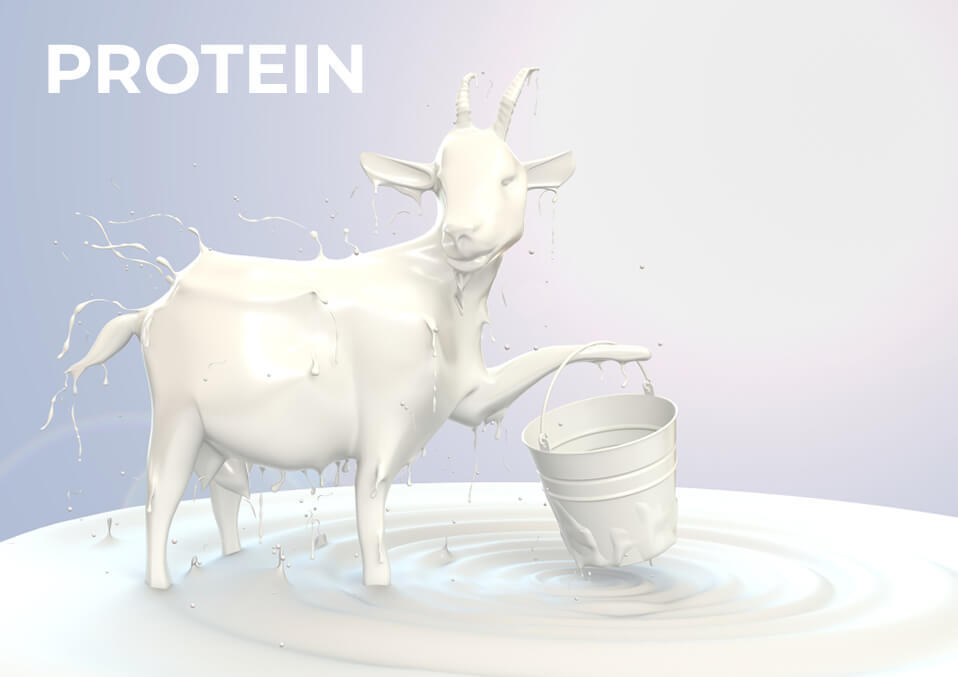
The goat’s milk for toddlers in New Zealand is growing in popularity. They are now considered by many parents as a great alternative to cow’s milk that has a rich content of calcium, vitamin D and fat content.
Goat’s milk for toddlers is the most preferred choice after breast milk in various countries around the world. It’s easier to consume and contains less allergenic properties than cow’s milk.
When can Toddlers Start Goat Milk?

Toddlers can have goat’s milk if they are 1 year old or more, however, they need to consult the pediatrician first. A baby can consume goat’s milk even if he’s on breastfeed. Also, Ayurveda considers goat’s milk as a replacement for breast milk.
Introducing Goat’s Milk for Toddlers
Discover more about goat’s milk formula, benefits of goat’s milk and things to remember before including them into your baby’s diet.
Benefits of Goat’s Milk

1. More consumable protein
When toddlers drink any kind of milk, protein curds or clumps are formed in their stomachs by the act of the stomach acid on the protein.
The smaller and softer the protein clumps, the more edible they are and faster they will go through the tummy.
Goat’s milk protein creates little and very soft clumps compared to the cow’s milk which makes it easier to consume and followed by fewer digestion complications.
This can be very helpful for babies and toddlers who have gastroesophageal reflux.
2. Less allergenic protein
Goat’s milk is the preferred choice because it has fewer amounts of allergenic proteins (alpha-S1 casein) than cow’s milk.
Cow’s milk causes an allergic reaction but it’s almost non-existent in the goat’s milk, which means that a toddler or baby who cannot sustain cow’s milk might be able to indulge a goat’s milk with no reactions.
But both goat’s milk and cow’s milk contain a new type of allergenic protein called lactoglobulin, which is why toddlers and babies who are hypersensitive to the cow’s milk may be hypersensitive to goat’s milk as well.
3. Has Less Lactose
While sugar lactose is both present in goat’s milk and cow’s milk, goat’s milk has less. And so, this is a little advantage for toddlers and babies who are lactose intolerant.
But always remember that both the goat’s milk and cow’s milk contain lactose, so toddlers and babies with serious lactose intolerance may not be able to take either kind of milk.
4. More digestible fats

When talking about digesting fat in the milk, it all boils down to the kind of fatty-acid chains that are present in it.
For example, the globules in the goat’s milk are faster to digest since they contain a higher amount of short and medium-chain fatty acids.
Milk with greater fatty acid chains, like those present in cow’s milk, need more effort the intestines to absorb and in turn take more time to reach the digestive system.
Goat’s Milk Formula
We all know that the best milk for babies and toddlers comes from the breast, but when a mother can no longer produce milk, goat’s milk formula can be a suitable alternative and it’s better than the traditional cow’s milk formula.
Babies under 1-year-old who are sensitive to cow’s milk-based formulas, hypoallergenic or soy formulas are often given the goat’s milk formula, but only if the mother and baby had a consultation from their pediatric nutritionist.
The market is swamped by different milk formulas with goat’s milk as the main ingredient. They all have the essential vitamins and minerals needed and have been attuned to further support the goat’s milk natural digestibility.
But depending on the formula, it’s more likely that you might still need to add Vitamin B-12, iron and folic acid to your baby’s diet to guarantee that they’re taking the right balance and kind of nutrients every meal.
If possible, check the formulas that are hypoallergenic to avoid the danger of allergies for your babies. Also, search for the formulas or the traditional goat’s milk that are certified to be all-natural, free of antibiotics and isn’t genetically modified or contain growth hormones or some other possible threats.
Be sure that the goat’s milk you are introducing to your baby is pasteurized as well to assure that harmful bacteria that could make them sick are non-existent.
What to Consider Before Introducing Goat’s Milk for Toddlers
1. Your toddler’s age
It’s important to know that babies under 12 months are not recommended to consume goat’s milk products because it may cause intestinal irritation, anemia, and digestive problems.
2. Allergic Reaction
What if your toddler develops an allergic reaction to goat’s milk? Allergies can immediately appear; however, it might be in many different kinds.
Vomiting, sneezing, wheezing, runny nose and swelling are the most common symptoms in a baby. They may also develop skin irritation and eczema. More serious cases of allergies in a baby are diarrhea, asthma, itchy rashes, nasal congestion, watery eyes, cramps, coughing and colic in small babies.
The moment you notice these symptoms on your baby, immediately stop using the goat’s milk and observe if these reactions disappear or reduces and talk to your pediatrician about other milk alternatives.
But if a goat’s milk has life-frightening effects, such as seizures, trouble breathing and other symptoms of anaphylaxis, throw the goat’s milk and immediately call 911for help.
3. Folic Acid
As a parent, you should be informed that the goat’s milk and cow’s milk have different nutrient composition. The cow’s milk contains 10% folic acid while goat’s milk slightly less, which means that your toddler or baby will need extra folic acid to grow healthy.
4. Vitamins and Minerals
Goat’s milk and cow’s milk have the same content of vitamins and minerals, but goat’s milk contains higher amounts of vitamin A, vitamin B6, calcium, copper, niacin, potassium and the antioxidant selenium. On the contrary, cow’s milk has more folic acid and vitamin B12.
Since the amount of folic acid in a goat’s milk is lower than 10% of cow’s milk, it is advised that your baby must be fed with more folic acid.
Read also:
- Best Freezer Meals For Toddlers
- Safe And Delicious Tuna Recipes For Toddlers
- Child Drinking Too Much Milk: Is it Risky or Safe?


